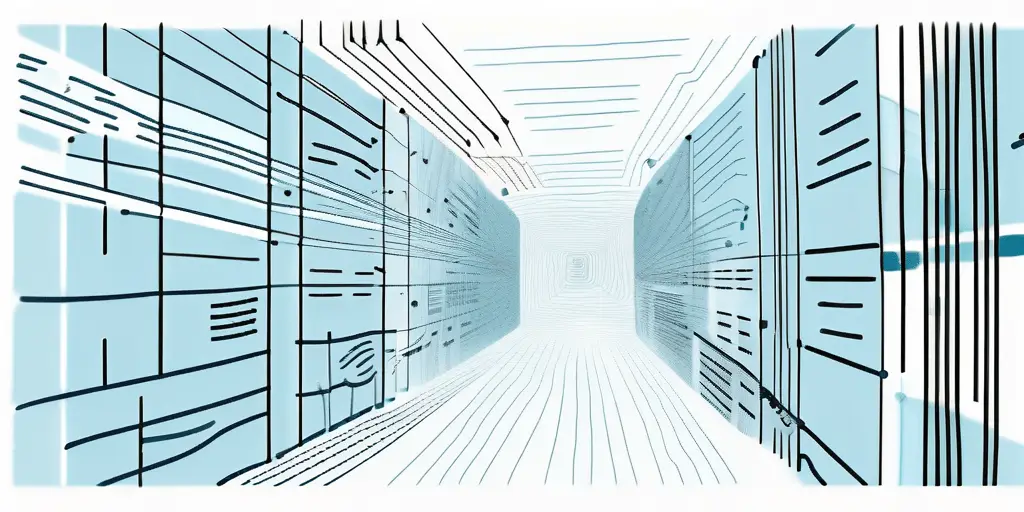In today’s digital age, where data is constantly being shared and transmitted, security has become a paramount concern. As a result, various encryption techniques have been developed to protect sensitive information. One such technique is steganography, a fascinating method that hides data within other seemingly innocent files. This comprehensive guide aims to unravel the intricacies of steganography, its mechanics, applications, and its role in the future of technology.
Understanding Steganography
Steganography, derived from the Greek words “steganos” meaning covered and “graphein” meaning writing, involves concealing data within other files without arousing suspicion. While it is often confused with cryptography, which focuses on encrypting data, steganography instead focuses on hiding the data, making it less likely to be detected.

Steganography techniques can be categorized into various types, such as image steganography, text steganography, audio steganography, and video steganography. Each type utilizes different methods to embed data within the respective media format, posing unique challenges for detection and extraction.
The Concept and History of Steganography
The concept of steganography can be traced back to ancient times, where secret messages were concealed on wax tablets by scraping the surface and writing on the exposed layer. Over the centuries, steganography has evolved alongside advancements in technology, finding new and innovative ways to hide data within various media.
One notable historical example of steganography is the use of invisible ink during the American Revolutionary War. Spies would write messages between the lines of innocent-looking letters, only revealing the hidden information when treated with specific chemicals or heat.
The Importance of Steganography in Data Security
In an era of increasing cases of data breaches and cyber attacks, steganography plays a crucial role in enhancing data security. By concealing sensitive information within everyday files, steganographic techniques provide an added layer of protection, making it harder for attackers to gain unauthorized access.
Furthermore, steganography is also utilized in digital watermarking, a process where information is embedded into multimedia content to verify its authenticity and source. This application is commonly used in copyright protection and tamper detection for images, videos, and audio files, ensuring the integrity of the content.
The Mechanics of Steganography
Understanding how steganography works is essential to grasp its potential applications and limitations. At its core, steganography operates by exploiting the imperceptibility of certain file formats, such as images or audio files.
Steganography is a fascinating field that delves into the art of concealing information within seemingly innocuous files. The practice dates back centuries, with historical examples including hidden messages in wax tablets or invisible ink on paper. In the digital age, steganography has evolved to encompass a wide range of techniques that enable covert communication and data concealment.
How Steganography Works
Steganography techniques typically involve altering the least significant bit (LSB) of each pixel in an image or the least significant sample in an audio file. By modifying these bits, data can be embedded without significantly altering the overall appearance or sound of the file.
One of the key advantages of steganography is its ability to hide information in plain sight. Unlike cryptography, which encrypts data to make it unreadable, steganography focuses on ensuring that the existence of the hidden message remains undetected. This covert nature makes steganography a valuable tool for scenarios where secrecy is paramount.
Different Techniques in Steganography
There are various techniques employed within steganography, each with its own strengths and weaknesses. Some common techniques include least significant bit substitution, manipulation of the color palette, and the use of spread spectrum techniques.
Least significant bit substitution is a popular method that involves replacing the least significant bit of pixel values with the bits of the secret message. This subtle alteration is imperceptible to the human eye but allows for the hidden data to be extracted later. Manipulating the color palette of an image can also be used to embed information, leveraging the vast array of colors available to conceal data within the image’s visual content. Spread spectrum techniques spread the hidden data across the frequency spectrum of an audio signal, making it challenging to detect without the proper decoding mechanism.
Steganography vs Cryptography
While both steganography and cryptography are used to secure data, they differ in their approaches and application scenarios.
Steganography is the art of concealing information within other non-secret data, such as hiding a message within an image or audio file. This technique aims to prevent the detection of the hidden message itself. On the other hand, cryptography involves converting the original message into a secure format using algorithms and keys to protect its confidentiality and integrity.
Key Differences and Similarities
Cryptography focuses on encoding data to prevent unauthorized access, whereas steganography emphasizes hiding the data. Additionally, cryptography requires both the sender and receiver to have access to the encryption key, whereas steganography does not require a key for hiding or revealing the data.
Another key difference lies in the detectability of the techniques. While cryptography is more easily detectable due to the use of encryption keys and algorithms, steganography operates on the principle of “security through obscurity,” making it harder to detect the presence of hidden data.
Choosing Between Steganography and Cryptography
The choice between steganography and cryptography depends on the specific use case and level of security required. For highly sensitive information, a combination of both techniques may be employed, ensuring the data remains hidden and encrypted.
It is important to consider the intended recipient of the information, the potential threats faced, and the desired level of security when deciding between steganography and cryptography. Understanding the strengths and limitations of each method is crucial in safeguarding sensitive data from unauthorized access or detection.
Applications of Steganography
The applications of steganography are vast, ranging from digital media to cybersecurity.

Steganography, the art of concealing information within other data, has found diverse applications across various fields. Beyond its traditional use in covert communication, steganography has also been employed in fields such as digital forensics, copyright protection, and even artistic expression.
Steganography in Digital Media
One of the most common applications of steganography is within digital media, such as images, audio, and video files. By hiding data within these files, secret messages can be conveyed without attracting suspicion.
In the realm of digital forensics, steganography poses both challenges and opportunities. While it can be used by criminals to hide incriminating evidence, forensic experts leverage steganalysis techniques to detect and extract hidden information for investigative purposes.
Steganography in Cybersecurity
Steganography also plays a significant role in enhancing cybersecurity measures. It can be used to hide encryption keys, sensitive information, or even malware within seemingly harmless files, adding an extra layer of protection against attacks.
Moreover, in the realm of cybersecurity, steganography is not limited to data hiding. It is also utilized in digital watermarking to protect intellectual property rights and prevent unauthorized duplication or distribution of digital content.
The Future of Steganography
As technology continues to advance, so does the potential for steganography. The art of concealing information within other data is taking on new dimensions in the digital age, opening up exciting possibilities for both security and covert communication.

Emerging Trends in Steganography
One emerging trend in steganography is the use of machine learning algorithms to automate the process of hiding data within files. This cutting-edge approach not only streamlines the embedding process but also enhances the overall security of the hidden data. By leveraging the power of machine learning, steganography is becoming more sophisticated and challenging for adversaries to detect.
Another notable trend is the integration of steganography with blockchain technology. By embedding sensitive information within blockchain transactions, users can achieve an unprecedented level of data security and immutability. This fusion of steganography and blockchain holds immense potential for applications requiring tamper-proof data storage and transmission.
The Role of Steganography in Future Technology
With the growing reliance on digital communication and the ever-evolving threats of data breaches, steganography will play an increasingly vital role in securing sensitive information. Both individuals and organizations can benefit from integrating steganographic techniques into their data protection strategies. As traditional encryption methods face challenges from quantum computing and sophisticated cyber threats, steganography offers a versatile and robust alternative for safeguarding confidential data.
Furthermore, the emergence of quantum steganography presents a paradigm shift in secure communication. By harnessing the principles of quantum mechanics, quantum steganography enables the transmission of information with unparalleled levels of security and privacy. This revolutionary approach has the potential to redefine the landscape of secure communication in an era of quantum computing.
In conclusion, steganography offers a unique and powerful solution to protect sensitive data from prying eyes. By concealing information within innocent files, it provides an added layer of security that is often overlooked by conventional encryption techniques. As technology advances, the future of steganography holds promising possibilities for data security in a digitally interconnected world.
As you consider the advanced techniques of steganography for securing your sensitive data, remember that the right cybersecurity partner can make all the difference. Blue Goat Cyber, a Veteran-Owned business, excels in providing comprehensive B2B cybersecurity services tailored to your needs. From medical device cybersecurity to HIPAA and FDA compliance, and from SOC 2 to PCI penetration testing, our expertise is your frontline defense against cyber threats. Contact us today for cybersecurity help and ensure your business is fortified with cutting-edge protection.
